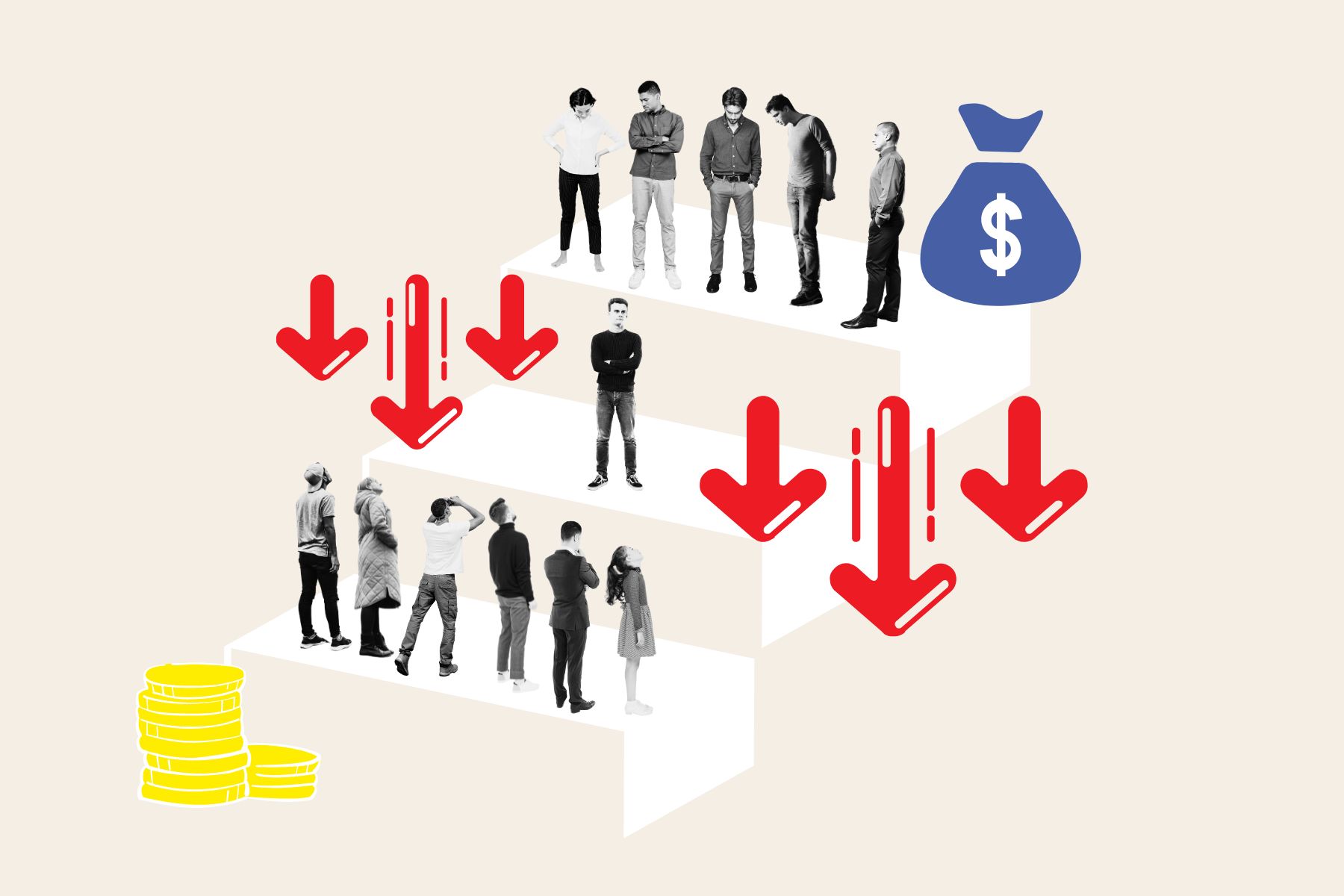America’s middle class, traditionally considered the backbone of the nation and its economic engine, has been shrinking for the past 50 years, according to a recent Pew Research Center survey.
A study based on government data released by the Washington-based nonpartisan fact tank in late May found that the share of Americans living in middle-class households dropped from 61 percent in 1971 to 51 percent in 2023. During the same time, the share of Americans living in lower income households rose from 27 percent to 30 percent, while that of individuals living in upper income households rose from 11 percent to 19 percent.
The findings show us that the wealth gap between Americans has grown deeper in the past decades, exacerbating inequality. While households in all income tiers had much higher incomes in 2023 than five decades before, the income for upper-income households has grown at a much faster pace than that for the middle class since the 1970s.
Illustration by Newsweek
“It is now over a decade since President Obama called the growing inequality in the United States the defining challenge of our time, reflecting both a reading of economic developments over the course of the last four decades, and offering a forecast of the threat posed to the lives of Americans and of its democracy,” Miles Corak, professor of economics at the Graduate Center of the City University of New York, told Newsweek.
“America is a much more prosperous society than it was in the 1970s and 1980s, and even more prosperous than just a decade ago, in spite of recessions and pandemics,” he continued.
“But it is also more polarized, with an ever-increasing share of income and wealth going to the top, as the Pew report documents, an ever-increasing insecurity among the middle, and a declining share of income and a less hopeful future for those at the bottom.”
The Pew Research Center defines middle-class Americans as those living in households with an annual income that is between two-thirds and twice the national median household income. The income can vary according to household size.
The median income of middle-class Americans has risen from $66,400 in 1970 to $106,100 in 2022—a 60 percent growth. While this is an incredible improvement, during the same five decades the median income of upper-income households rose by 78 percent (from $144,100 in 1970 to $256,900 in 2022). Lower-income households saw an increase of their median income of 55 percent (from $22,831 in 1970 to $35,318 in 2022).
Crucially, the share of total U.S. household income held by the middle class has also dropped since 1970. By then, the American middle class held 62 percent of the aggregate income of all U.S. households; now they account for 43 percent only. While the share held by the lower-income households has remained relatively unchanged (from 10 percent to 8 percent), the upper class has grown its share from 29 percent to 48 percent.
Migrants, some 14 percent of the country’s population, were less likely than U.S.-born residents to be in the middle class and more likely to be living in lower-income households.
For Corak, these findings ring an alarm bell over the future of the U.S. economy.
“A prosperous but also a fully inclusive society is what America needs, with a hopeful and resilient middle class at its core. A prosperous resilient middle class is the backbone of an inclusive society,” Corak said.
“The middle class supports consumption, drives investment—both in the market place and in communities—and is the foundation for social protection, strong communities and a helpful public service,” he added.
“The OECD, in a 2019 report, stated that societies with ‘a strong middle class have lower crime rates, they enjoy higher levels of trust and life satisfaction, as well as greater political stability and good governance,'” Corak said.
“The fact that the American economy continues to generate prosperity with polarization should be as much a worry to us now as it was a decade or even more ago,” he added.
According to Corak, America’s middle class can only make a comeback “if workers and working families have more bargaining power in the way wages are set and work organized; if poverty and particularly poverty among children is held in check and lowered by economic growth and by effective and generous government support; if all groups regardless of race, gender and ethnic background have the opportunity to fully develop and profit from their talents and energies; and if the rich pay their fair share in taxes.”
Do you feel a middle-class lifestyle is getting harder to achieve? Contact g.carbonaro@newsweek.com
Uncommon Knowledge
Newsweek is committed to challenging conventional wisdom and finding connections in the search for common ground.
Newsweek is committed to challenging conventional wisdom and finding connections in the search for common ground.
